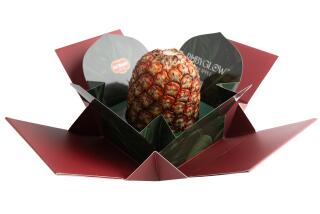Fad Fruits
I n the 18th Century, Europeans got to know the tropical world on an unprecedented scale. In the process, they got to know tropical fruits, which had the same sort of exotic appeal for them that they have for us today, except that they were vastly more expensive. Only a few varieties had any hope of surviving the weeks-long boat journey to Europe.
One that did was the pineapple, and Europe went pineapple-mad. Charles Lamb (b.1775) spoke for his time when he described pineapple as “almost too transcendent . . . a pleasure bordering on pain, from the fierceness and insanity of her relish.” Pineapples became the symbol of lavish hospitality, which is why so many pieces of antique dining room furniture are ornamented with carved pineapples.
Another tropical hit was the mango. Ripe fresh mangoes didn’t have a prayer of making it from India to London, of course, but pickled mangoes did. Mango pickles were fantastically fashionable, and very expensive.
As a result, people who couldn’t afford mangoes started “mangoing” other things by pickling them in the highly spiced Indian style. This explains the dozens of late 18th- and early 19th-Century recipes for “mangoes” made from cucumbers, cantaloupes, green peaches and bell peppers, and probably why some Midwesterners still refer to bell peppers as “mangoes.”
More to Read
Sign up for The Wild
We’ll help you find the best places to hike, bike and run, as well as the perfect silent spots for meditation and yoga.
You may occasionally receive promotional content from the Los Angeles Times.






